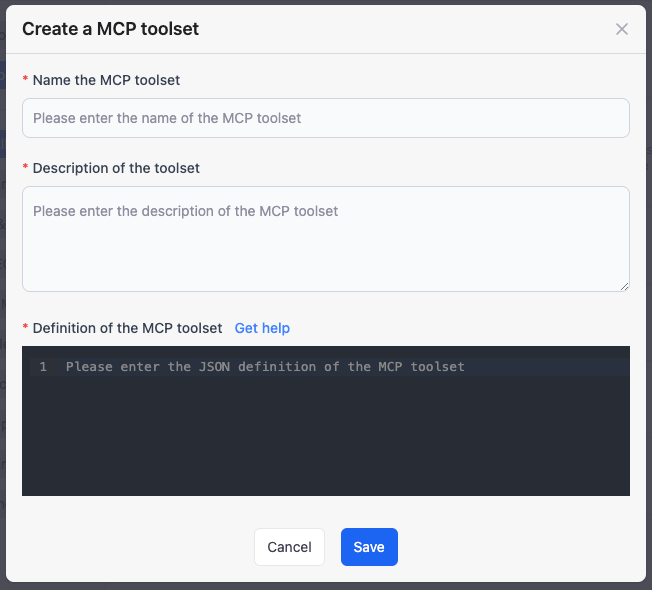How to Add Custom MCP Servers?
Through the Model Context Protocol (MCP), AI models can access external tools and data sources, enabling more powerful functionality. ConsoleX AI provides comprehensive support for MCP tools, including SSE-based and Stdio-based MCP servers.
Integrating and Using MCP Servers in ConsoleX
Adding and using MCP services in ConsoleX AI is very simple, just follow these steps:
- Log in to ConsoleX AI and click the Tools Vault entry at the bottom-left corner.
- Click the Add a MCP server button at the top of the page.
- Fill in the JSON description of the MCP server.
- Click the Save button to complete the MCP server integration.

How to Configure SSE-based MCP Servers
Configuring and adding SSE-based MCP servers in ConsoleX AI is very simple, just enter the following format configuration:
{
"url": "<your_sse_mcp_server_endpoint>"
}
You can also add any additional parameters, all those parameters will be passed to the server through header attributes. For example, you can add header authentication or pass other configuration parameters:
{
"url": "<your_sse_mcp_server_endpoint>",
"Authorization": "Bearer <your_auth_token>",
"timezone": "Europe/Berlin"
}
Note: SSE servers need to extract parameters from headers for authentication or use in functional logic themselves.
How to Configure Stdio-based MCP Servers
ConsoleX is a cloud service, so it cannot directly call local resources through Stdio. However, you can use MCP-connect to implement relay and enable MCP server calls with Stdio transport protocol.
The specific steps are as follows:
- Install and run
mcp-connecton your local computer and set theauth_tokenfor security consideration. - Make your MCP proxy URL publicly accessible through tunnel services (such as ngrok or Cloudflare Zero Trust).
- Enter the global MCP proxy URL and
auth_tokenin ConsoleX Settings. - Then you can add Stdio-based MCP server configurations on ConsoleX just like a local MCP client.
Individual Configuration:
Besides setting global proxy endpoints and auth_token, you can also set bridge_url and auth_token individually for each MCP server. Individual settings will override global configurations.
For example:
{
"bridge_url": "<your_mcp_bridge_url>",
"auth_token": "<your_auth_token>",
"command": "uvx",
"args": ["mcp-server-fetch"]
}
Frequently Asked Questions
Q: Which models support MCP servers?
A: The MCP protocol was initiated by Anthropic, so Claude's Sonnet and Opus model series can provide better support for MCP server calls. However, the tool part of MCP servers is available for any other large model that supports tool calling.
Q: What are the limitations of using MCP servers in ConsoleX?
A: You cannot directly add Stdio-based MCP servers in ConsoleX, but you can implement MCP calls with Stdio transport protocol through MCP Bridge.
Q: I cannot successfully add local Stdio-based MCP servers, what should I do?
A:
- First, please ensure that
mcp connecthas been successfully installed and is running. - Confirm that the
mcp connectendpoint can be accessed through the public network (you can confirm this through the health check endpoint). - If the endpoint is accessible but there are still issues, please check the output logs of
mcp connectin the terminal to find the cause.